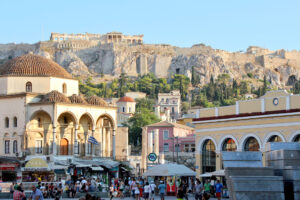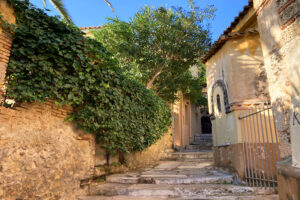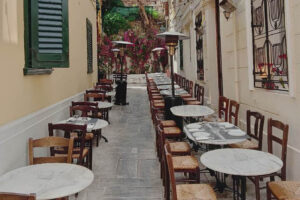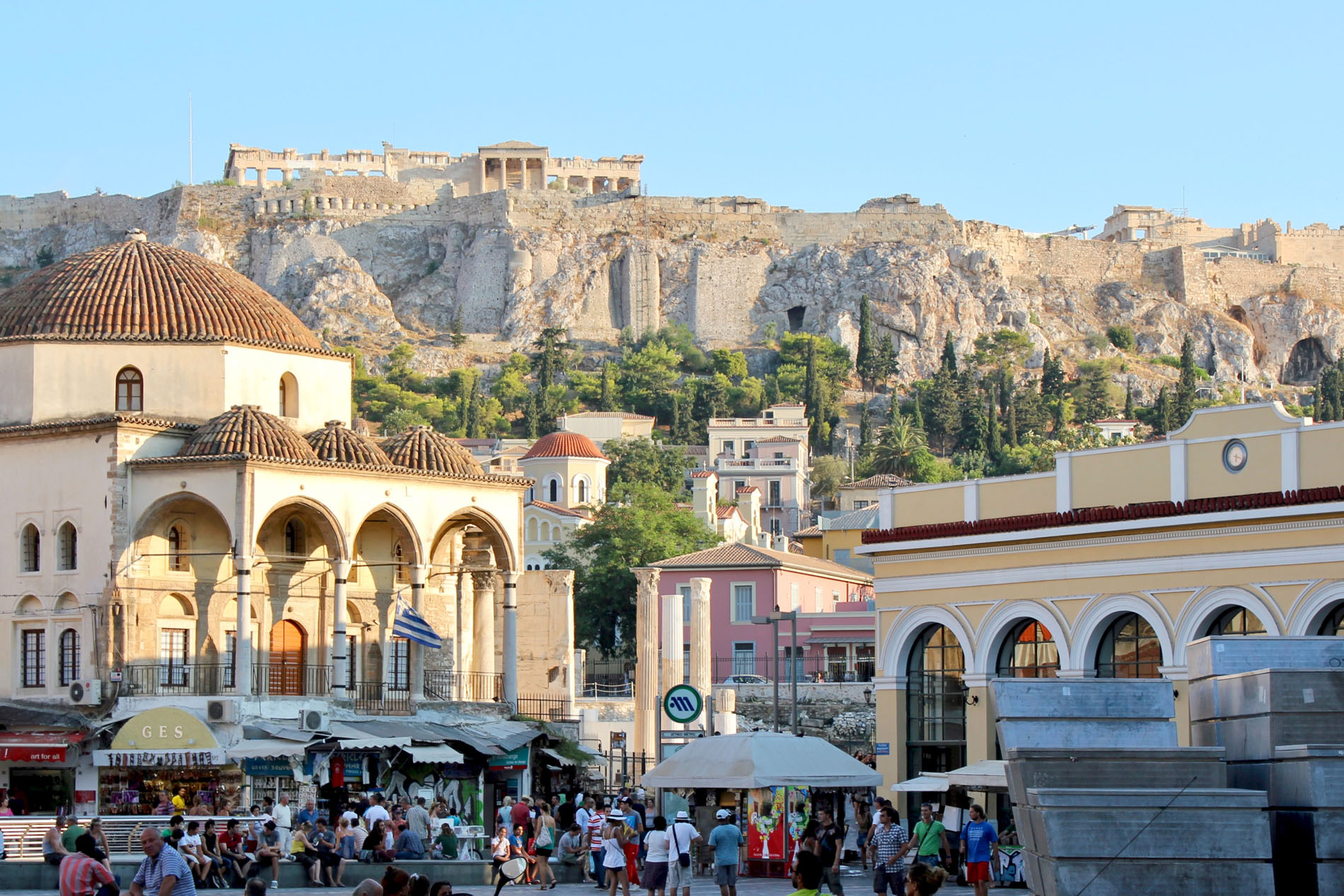An amazing treasure hunt in the heart of Athens.
Bordering Plaka, on the east slope of the Acropolis there is a hidden gem rarely discovered by tourists.
It is a small settlement of Cycladic architecture called Anafiotika.
The tiny houses are painted in white while the window shutters and doors are light blue, the color claimed to repel evil. Walking in Anafiotika is an interesting scavenger game taking place in these narrow streets.

Narrow paths filled with colorful flowers wind between the houses. The cats lying down in big flowerpots are also the part of this strange scenery.
Everything looks just like any Cycladic Island only the sea is missing.
How did the Cycladic Island appear in the very center of Athens? Anafiotika is called after the island Anafi, so it means – a small Anafi.
When Greece became independent after the uprising against Turks then Athens became its capital in 1834. Since Athens was in ruins at the time there was really a lot to do and the king Otto I had very ambitious plans.
To rebuild the city the skillful masters were needed so the king called everyone who could do a job to come to Athens.
The most skillful ones were those from the island Anafi who were the first to come. They felt homesick though and to overcome that feeling they decided to build their houses somewhere similar to their rocky island. The rock good enough to remind them of their homeland was the Acropolis itself.
Thus, during the day they were building neoclassical, impressive, huge buildings and at night their Cycladic, tiny, low, but functional houses on the slope of the Acropolis.
The houses had to be built over the night according to the Turkish law which was still valid stating whatever was built from sunrise to sunset belonged to the one who had built it.

In this way the masters from Anafi did not have a problem with guardians of public order. But, neither with goddess Athena! Namely, Pythia from Delphi did not allow anything to be built on the Acropolis next to the sanctuary out of respect for goddess Athena. However, the masters from Anafi dared to have their houses there and still were not punished by goddess.
Gods punished only those who tried to be above them and that was not the intention of Anafi masters judging from their tiny houses built on the carefully chosen place on the slope not to disturb the magnificence of the sanctuary. There are also two 17th century old churches in Anafiotika rebuilt in the Cycladic style by Anafi masters. In the church of St. Symeon there is a miracle icon of St. Mary of Kalamiotis which was brought from the Anafi island.
Another church is St. George of Rock. Nearby this church there is a monument to Konstandinos Koukidis, a guardian of Greek flag on the Acropolis. He was guarding the flag when Germans came in 1941 and ordered him to replace the Greek flag with German. When he slowly lowered the Greek flag from the pole he wrapped himself in it and dived from the rock.

The place of the monument is the place where he fell dead. The bigger part of Anafiotika was destroyed in 1950 because of archaeological excavations. Today there are 45 houses left and all of them owned by Anafi masters‘ descendants.
Although it is considered as the part of Plaka, Anafiotika is hidden, invisible and unobtrusive. When you discover it and steps on its winding, narrow, stone paths, you will not find taverns, souvenir shops and caffes. There is nothing noisy here.

Anafiotika is an oasis of piece and silence. You will enjoy the calming colours of flowers and a beautiful view. And, if you are inclined to some art it is certain you will find your muse here.
People are scarce but if by chance you meet the inhabitant of Anafiotika he will kindly greet you with Kalimera (Good morning) and will give you a smile, something that improves everybody’s day.
by D. Lalic – Cottrell
